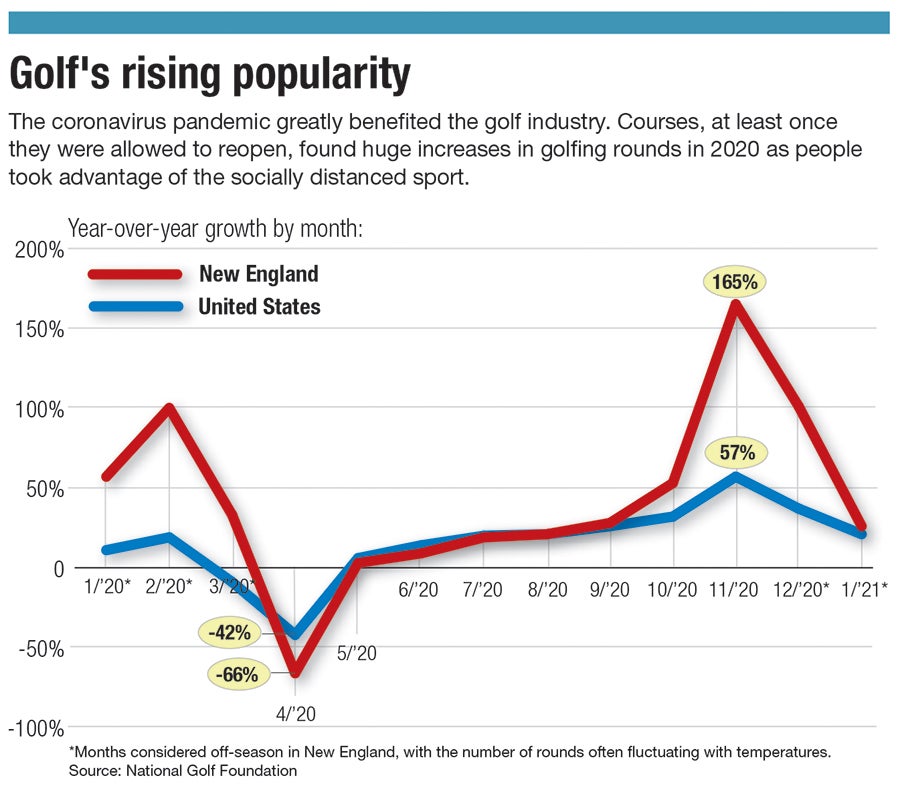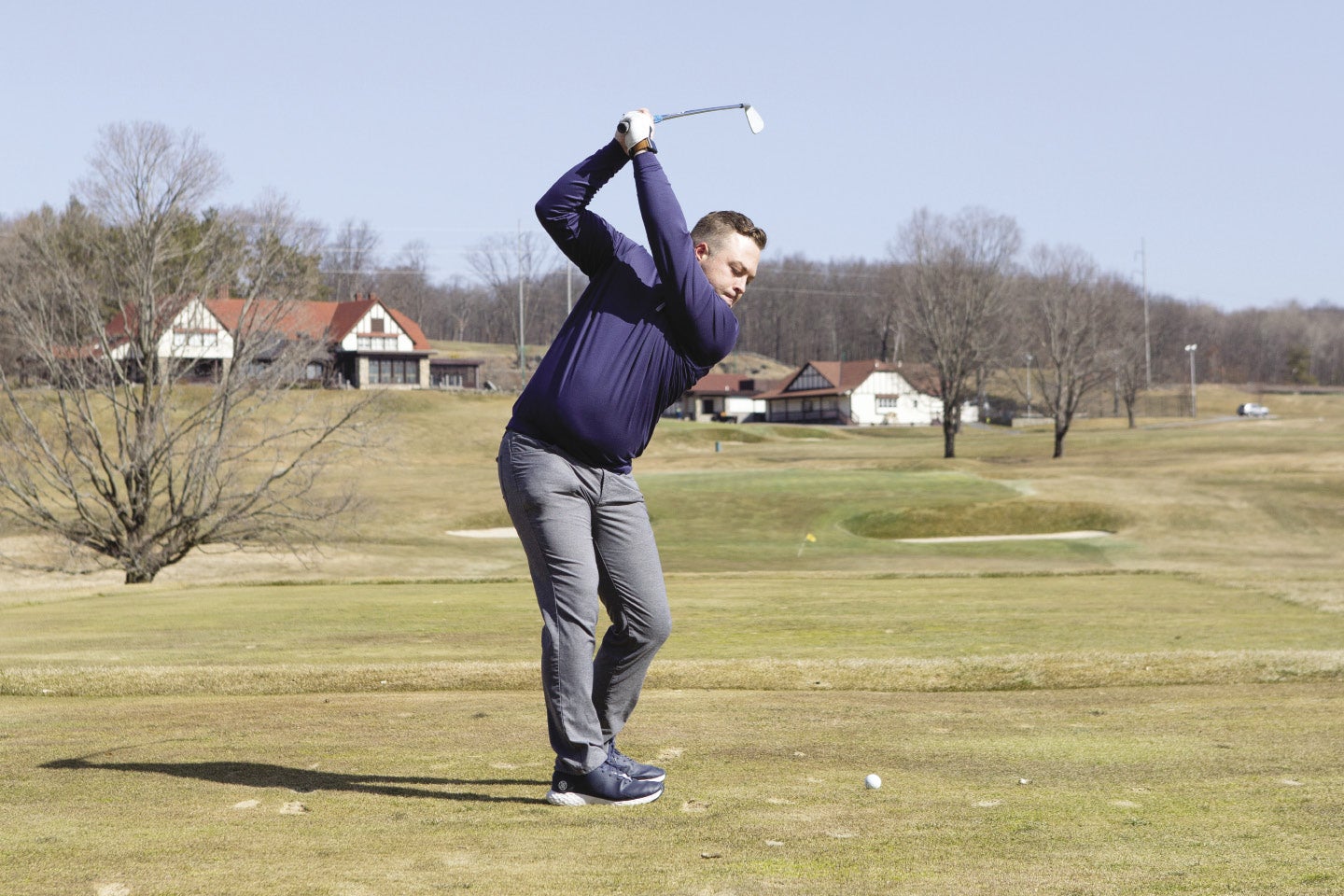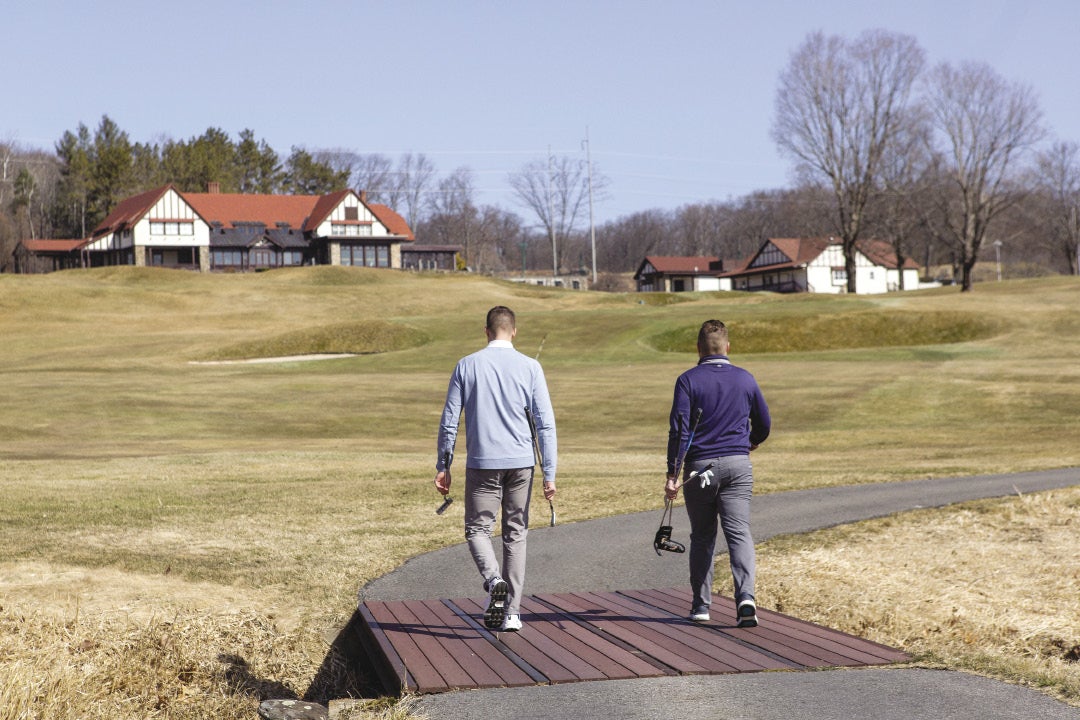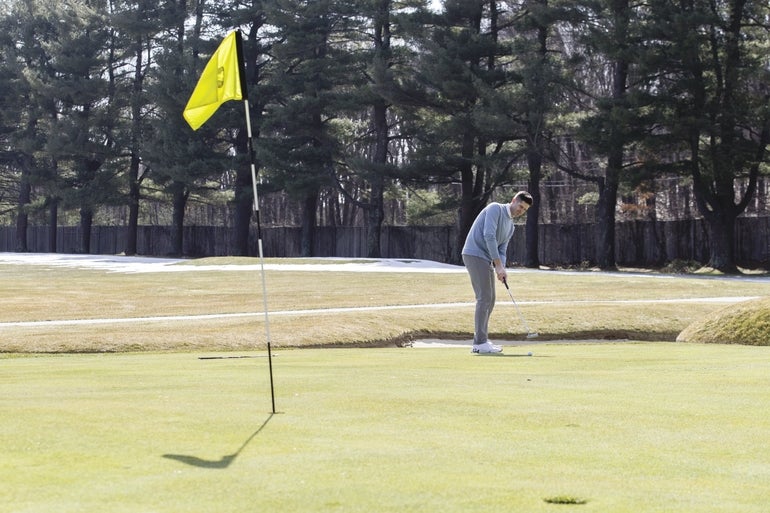Golf needed a boost, and the pandemic gave it to a sport that lends itself well to social distancing. Now courses are working to keep the golfers playing all those extra rounds.
Get Instant Access to This Article
Subscribe to Worcester Business Journal and get immediate access to all of our subscriber-only content and much more.
- Critical Central Massachusetts business news updated daily.
- Immediate access to all subscriber-only content on our website.
- Bi-weekly print or digital editions of our award-winning publication.
- Special bonus issues like the WBJ Book of Lists.
- Exclusive ticket prize draws for our in-person events.
Click here to purchase a paywall bypass link for this article.
Golf was not doing so well. Courses were often hurting, and some even closing, as people struggled to find the time, or perhaps the money, to play a round.
The coronavirus pandemic changed that. A public health crisis that meant being outside and spread apart benefited a sport that’s all about those two things – being out on the course with partners who might never need to come within six feet of each other.
It was all enough to more or less make up for the lack of weddings, showers, and other banquets golf courses would typically rely on for much of their revenue, especially in the warmer months. It was also enough to pleasantly surprise leaders of Central Massachusetts golf courses expecting a difficult year all around.

“It took me by surprise,” said Troy Sprister, the general manager of Worcester Country Club.
Sprister, whose club’s history stretches back more than a century, thought the pandemic would bring crippling economic struggles, forcing people to give up their memberships. Instead, many found extra time on their hands, particularly if they now worked from home or were forgoing travel. They also found, rediscovered, or doubled down on a leisure activity rarely requiring coming too close to others.
A rollercoaster year
At the New England Country Club in Bellingham, Mike Daron, the golf director, tracked the dramatic ups and downs of the 2020 season. A warm start to the year brought the number of rounds up 87% from where it would normally be. Then the pandemic hit. The course was then down 23%. It finished the year up 30%, despite weeks in the spring in which all courses were forced to close.
“Unheard of. Historic,” Daron said of New England Country Club’s year.

It wouldn’t have seemed that way – at least not in a good sense – when the pandemic was just starting. Golf courses, like virtually every other non-essential business, were forced to close in the early weeks of the crisis.
Weddings and other events either weren’t held at all or were shrunk far down in size, something crippling to revenue at places like Cyprian Keyes Golf Club in Boylston.
“Obviously it was tough, but a lot of businesses have challenges,” General Manager David Frem said, putting the course’s events business in perspective.
But when courses were able to reopen in May, golfers flocked, despite health-related restrictions. No one was allowed in pro shops or clubhouses, and tee times almost exclusively had to be made online first.
First, no one could use motorized carts, and then only those who had a medical need. Even later than that, only one person could use a cart at a time, and tee times were spread 15 minutes apart, two factors slowing down play and limiting courses’ capacity.
Carts had to be sanitized between each use, and more had to be put into use than ever needed before – an issue when a small number were always down for repair.
“Things that we never thought we’d have to worry about,” Daron said.
Those weren’t the only adjustments. Flagsticks marking each hole’s cup, which are normally taken out when players are putting, couldn’t be touched. Neither could bunker rakes, which keep sand traps smooth for other players.

Other fixes have involved clever tricks.
Courses used cut pool noodles, usually used to help people float, into segments a few inches long so a golf ball wouldn’t fall to the bottom of the cup, and golfers wouldn’t need to potentially touch the bottom of the flagstick. Another method involves a hook on the flagstick golfers can lift with their putter to get their ball out from the hole without touching a thing.
“People were so happy to be out there that I don’t think it bothered people to have those limitations,” Sprister said.
By the looks National Golf Foundation data, lots of others were happy to be on the course last year, too.
Nationally, nearly 14% more rounds were played in 2020 – about 500 million in all. Even after an estimated 20 million rounds of golf lost to spring closures, golfers played 60 million more rounds last year than they did in 2019, according to the foundation.
New opportunities for growth
Golf’s popularity had waned a bit since hitting new highs in the early years of Tiger Woods’ career in the late 1990s and early 2000s.
In those years alone, a number of Central Massachusetts courses opened: Blackstone National Golf Club in Sutton and Kettle Brook Golf Club in Paxton in 1999 and two years later, Charter Oak Country Club in Hudson and The International’s Oaks course in Bolton. Another year later, three more opened: Highfields Golf & Country Club in Grafton, Red Tail Golf Club in Devens, and the Hopkinton Country Club.

The high of that period eventually ebbed, with stories in the industry of players getting discouraged by relatively high prices, and less time to spend three or four hours on the course.
In Central Massachusetts alone, at least three golf courses have been bought for residential redevelopment in the past few years: Clearview Country Club in Millbury, Millwood Farms Golf Course in Framingham, and Glen Ellen Country Club in Millis.
Now, golf has an opportunity to remind people why they may have enjoyed the sport to begin with, or why it’s worth giving it another try. Local course leaders said they saw a lot of first-time golfers in 2020, people they’re now working to hold onto.
“Golf came back way better than expected,” said Frem, the general manager at Cyprian Keyes, which was especially busy with its nine-hole course, whose quicker play can appeal to more casual golfers.
Course leaders are keeping one eye on pandemic restrictions still in place – though often looser – for the time being, while also looking ahead to golf’s coming years.
Some factors are beyond local club’s control. Woods, who helped bring the sport to new heights, was badly injured in a car crash in February, putting the 45-year-old’s own future in the sport in question.
“I’m very optimistic that no matter what happens on the tour, that we have the right programs in place,” Sprister said of professional golf.
On Sundays, for example, Worcester Country Club has family golf days, with far shorter holes set up for kids to chip or putt to get used to the game.
“How do we keep those folks engaged this year, and years moving forward?” Sprister said. “We’re pivoting, trying to bring children and women more involved in playing.”

